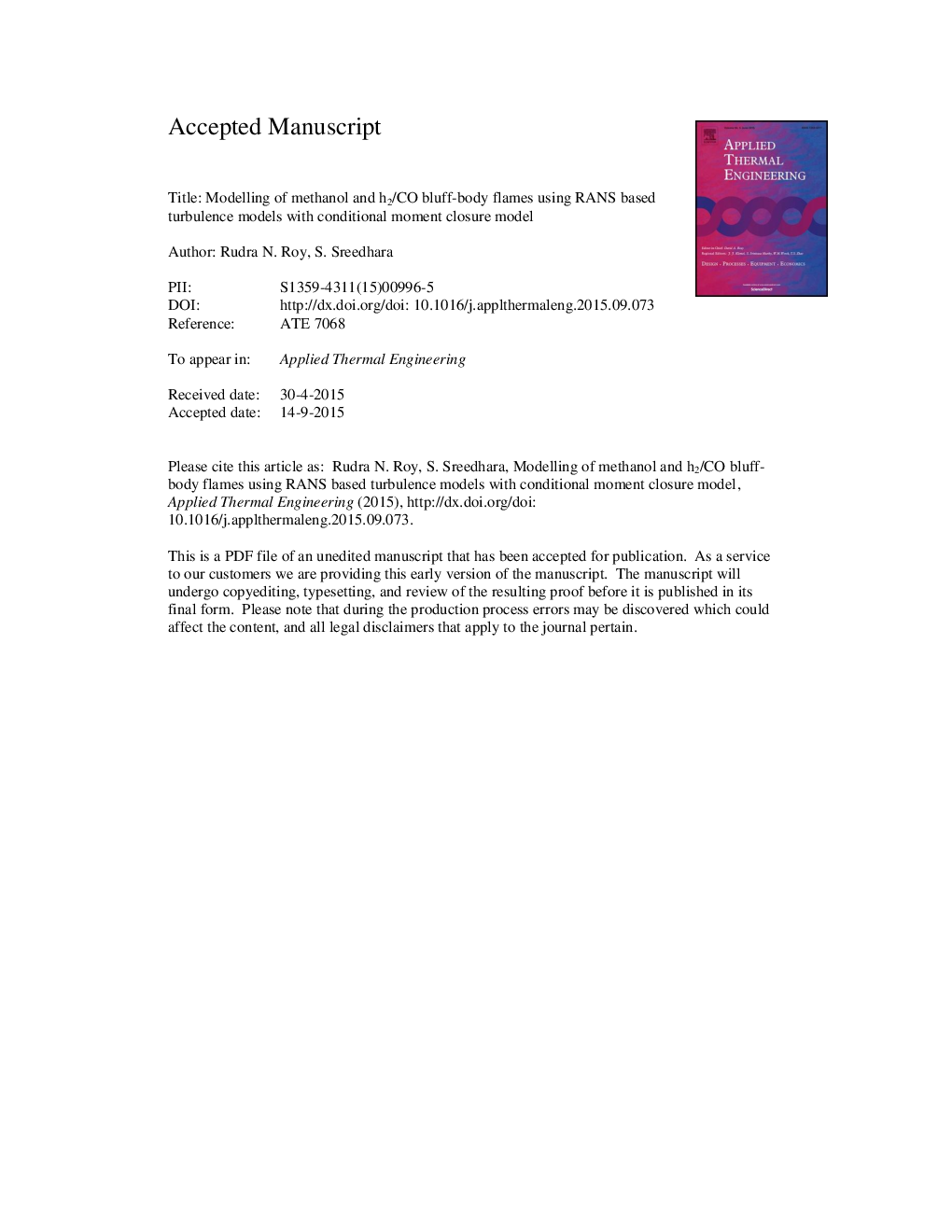| Article ID | Journal | Published Year | Pages | File Type |
|---|---|---|---|---|
| 7048764 | Applied Thermal Engineering | 2016 | 19 Pages |
Abstract
In this article, conditional moment closure model (CMC) along with four variants of RANS turbulence models has been used for investigating methanol and H2/CO bluff-body flames. This work was attempted to establish the accuracy of turbulence models in predicting the mixing fields. Accurate mixing field ensured an accurate prediction of probability density function (PDF) of the mixture fraction field which was used to obtain unconditional quantities from the conditional quantities calculated from the CMC closure. The flow and mixing field were calculated using ANSYS Fluent software by incorporating four different turbulence models viz. standard k-ε (SKE), modified k-ε (MKE), re-normalization group (RNG) k-ε and Reynolds stress turbulence models. Flow field simulations have been coupled with an in-house CMC solver to obtain the mean flame structure. Predicted mixture fraction profile, obtained using Reynolds stress turbulence model showed an excellent agreement against the experimental data. The unconditional mean temperature and species mass fraction obtained from the CMC model showed improved predictions when coupled with the Reynolds stress turbulence models for both the flames. However, conditional quantities were almost independent of the turbulence models tested.
Related Topics
Physical Sciences and Engineering
Chemical Engineering
Fluid Flow and Transfer Processes
Authors
Rudra N. Roy, Sheshadri Sreedhara,
